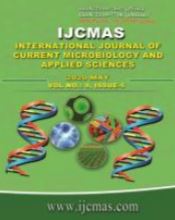


 National Academy of Agricultural Sciences (NAAS)
National Academy of Agricultural Sciences (NAAS)

|
PRINT ISSN : 2319-7692
Online ISSN : 2319-7706 Issues : 12 per year Publisher : Excellent Publishers Email : editorijcmas@gmail.com / submit@ijcmas.com Editor-in-chief: Dr.M.Prakash Index Copernicus ICV 2018: 95.39 NAAS RATING 2020: 5.38 |
A field experiment was conducted at Pandit Jawaharlal Nehru College of Agriculture and Research Institute, Karaikal to find out the physical and economic optimum doses of nitrogen for aerobic rice under different establishment methods in Karaikal during Kharif (June to September) 2018. The treatments comprised combination of three methods of establishment (broadcasting, line sowing and transplanting) and six levels of nitrogen (0, 100, 125, 150, 175 and 200 kg ha-1). The experiment was conducted in a split-plot design with three replications, assigning establishment methods to the main plots and the nitrogen levels to sub-plots. A short duration rice cv. ADT (R) 45 was used in the study. Among the different methods of establishment, the grain yield, straw yield, gross return, net return and B:C ratio were significantly higher in transplanting than line sowing and broadcasting. Among the different nitrogen levels, the maximum grain yield, gross return, net return and B:C ratio were recorded with the application of 150 kg N ha-1. The physical and economic optimum levels of nitrogen in broadcasting (157.7 and 145.4 kg ha-1, respectively), line sowing (187.2 and 170.2 kg ha-1, respectively) and transplanting (157.6 and 152.0 kg ha-1, respectively) varied. Transplanting rice seedlings under aerobic condition along with the application of 150 kg N ha-1 recorded the highest grain yield (4272 kg ha-1), gross return (Rs. 69821 ha-1), net return (Rs.24434 ha-1) and B:C ratio (1.54).
 |
 |
 |
 |
 |